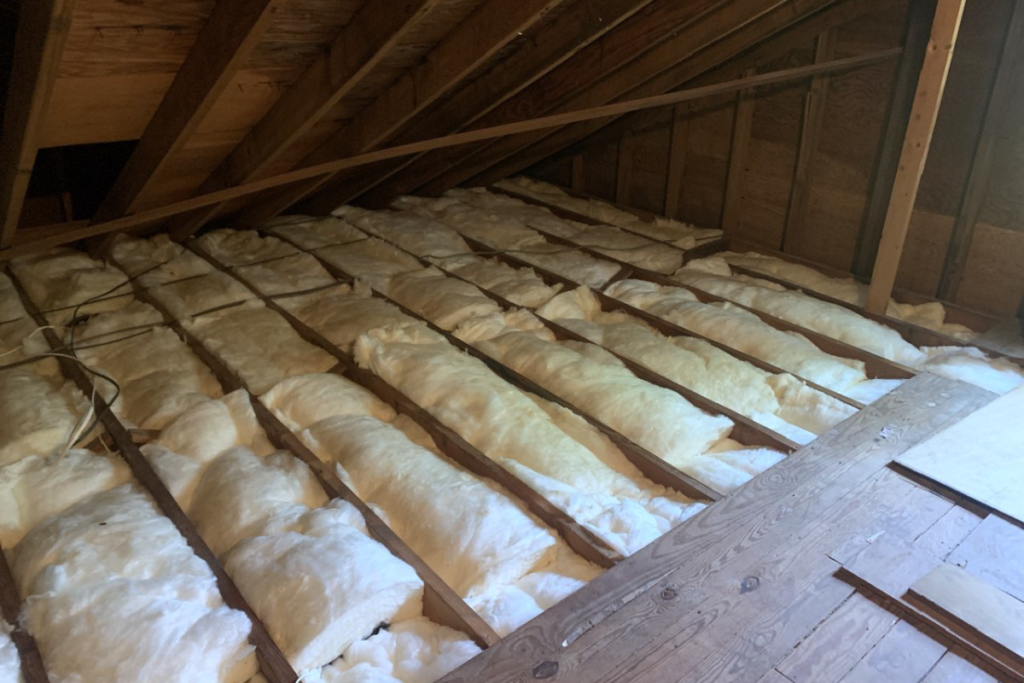7 Best Practices for Attic Moisture Control
Moisture control is critical to maintaining a healthy attic environment and protecting your home from potential damage. Excess moisture can lead to mold growth, structural damage, and decreased energy efficiency. Here are the best practices for effectively managing and controlling moisture in your attic.
1. Ensure Proper Ventilation
Proper ventilation is the cornerstone of moisture control in the attic. It allows moist air to escape and fresh air to circulate, preventing condensation and mold growth.
- Ridge and Soffit Vents: Install ridge vents at the peak of the roof and soffit vents along the eaves. This setup promotes a continuous flow of air, allowing hot, moist air to escape through the ridge vent and cool, fresh air to enter through the soffit vents.
- Gable Vents: These are installed on the exterior walls of the attic and can supplement ridge and soffit vents, enhancing airflow and moisture control.
2. Seal Air Leaks
Air leaks can allow warm, moist air from your living spaces to enter the attic, leading to condensation and moisture buildup.
- Inspect and Seal Gaps: Look for gaps around pipes, ducts, chimneys, and light fixtures. Use caulk or spray foam to seal these gaps and prevent air leakage.
- Install Attic Access Covers: If you have an attic hatch, door, or pull-down stairs, install an insulated cover to reduce air leaks.
3. Insulate Properly

Insulation plays a vital role in maintaining temperature and humidity levels in the attic. Proper insulation helps prevent warm air from rising into the attic and causing condensation.
- Choose the Right Insulation: Use moisture-resistant insulation materials like mineral wool or encapsulated fiberglass, especially in areas prone to high humidity.
- Install Insulation Correctly: Ensure that insulation is installed evenly and without gaps. Avoid compressing the insulation, as this can reduce its effectiveness.
4. Control Indoor Humidity
High indoor humidity can contribute to attic moisture problems. Keeping indoor humidity levels in check can significantly reduce the risk of condensation in the attic.
- Use Dehumidifiers: Place dehumidifiers in areas of your home that are prone to high humidity, such as basements and bathrooms.
- Vent Appliances Properly: Ensure that appliances like dryers, stoves, and bathroom exhaust fans vent to the outside rather than into the attic.
5. Inspect for Roof Leaks
Roof leaks are a common source of moisture in the attic. Regular inspections can help identify and address leaks before they cause significant damage.
- Check for Signs of Leaks: Look for water stains, mold, or damp spots on the attic floor and insulation. Inspect the roof for damaged or missing shingles.
- Repair Leaks Promptly: If you find any signs of a leak, repair it immediately to prevent further moisture intrusion and damage.
6. Maintain Gutters and Downspouts
Clogged or damaged gutters and downspouts can lead to water overflow, which can seep into the attic and cause moisture problems.
- Clean Gutters Regularly: Remove leaves, debris, and other blockages from your gutters to ensure proper water flow.
- Inspect Downspouts: Ensure that downspouts direct water away from the foundation and are free of obstructions.

7. Monitor Attic Conditions
Regular monitoring of attic conditions can help you stay ahead of potential moisture issues and take corrective action as needed.
- Use a Hygrometer: A hygrometer measures humidity levels in the attic. Regularly check the humidity and aim to keep it below 60%.
- Schedule Professional Inspections: Consider having a professional inspect your attic periodically to identify any hidden issues and recommend solutions.
Effective Attic Moisture Control for a Healthy Home
Managing moisture in your attic is essential for maintaining the health of your home and preventing costly damage. By ensuring proper ventilation, sealing air leaks, insulating correctly, controlling indoor humidity, inspecting for roof leaks, maintaining gutters and downspouts, and monitoring attic conditions, you can effectively control moisture and protect your home. Implement these best practices to keep your attic dry, safe, and energy-efficient year-round.
For more information or assistance with attic moisture control, feel free to contact our team of professionals who are ready to help you maintain a healthy home environment.
